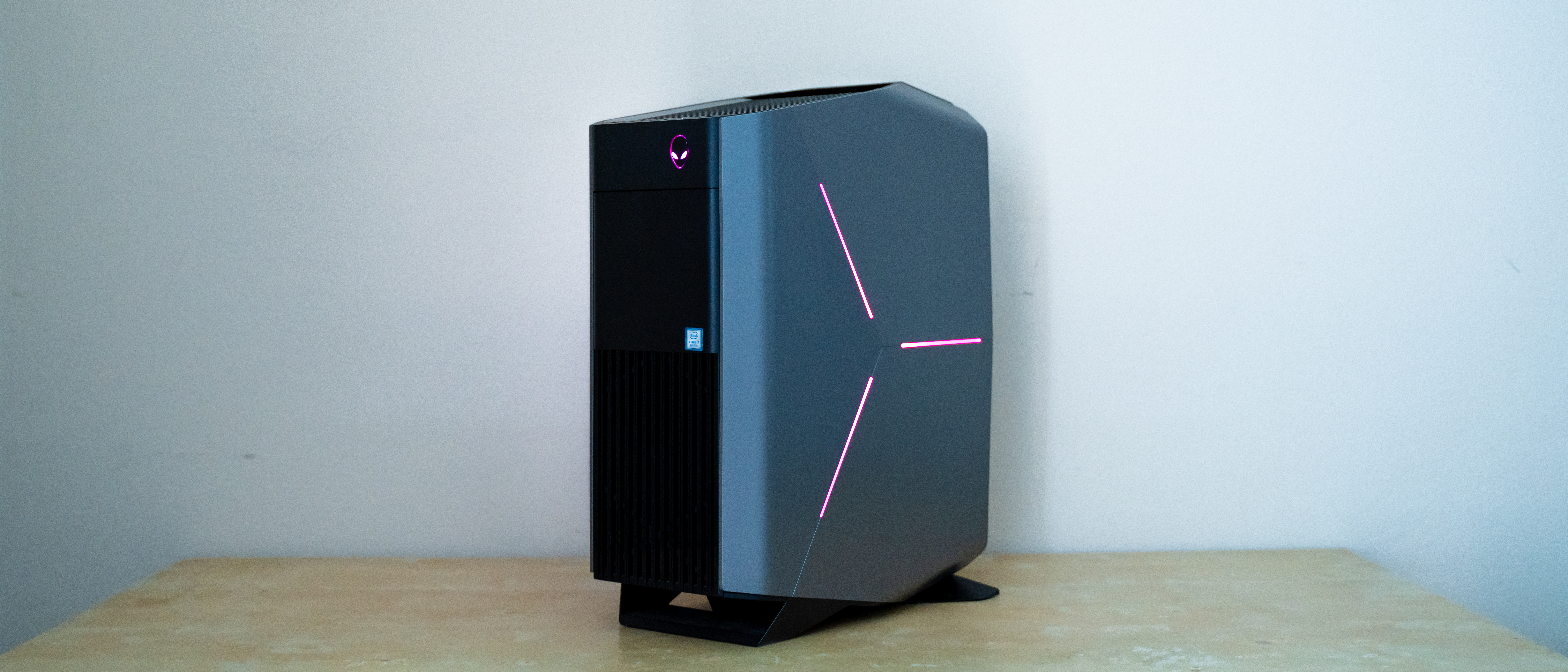TechRadar Verdict
While the souped-up Alienware Aurora R8 can cost a pretty penny, it more than delivers. It’s packed with the latest and greatest from Intel and Nvidia for a high-end gaming experience that blazes through any AAA game you can throw at it. It can tackle 1440p and even 4K gaming to an extent, all tucked into an elegant and understated gaming desktop.
Pros
- +
Plenty of computing power
- +
Cutting edge components
- +
Lots of ports
Cons
- -
Not quite ready for 4K gaming
- -
Pricing is just OK
Why you can trust TechRadar
The Alienware Aurora R8 proves that a gaming machine can be elegant and powerful at the same time. Touting excellent components like 9th-generation Intel processors and discrete Nvidia graphics while keeping its predecessor’s understated yet gaming-centric design, there’s a beast inside this beauty of a gaming desktop PC.
You’re getting just as many bells and whistles as well. The Alienware Aurora R8 is highly customizable and upgradable, and it comes with a well-implemented and easy-to-access chassis for tinkerers out there. That certain eases the pain of its price tag in the long run.
And, what a price tag it is. This potent package does come at a hefty price, setting you back $2,000 or more in the US, which is a premium purchase for most people. Considering that you’ll find equally powerful alternatives for much cheaper than its asking price, it’s a harder price to swallow for those with less flexible budgets.
If you can afford it however, the Alienware Aurora R8 is certainly worth its steep price of entry. We put the Alienware Aurora R8 through its paces so you can take a deeper look at what it can do.
Here is the Alienware Aurora R8 configuration sent to TechRadar for review:
CPU: 3.6GHz Intel Core i7-9700K (8-core, 12MB cache, up to 4.9GHz)
Graphics: Nvidia GeForce RTX 2080 (8GB GDDR6)
RAM: 32GB DDR4 SDRAM
Motherboard: micro-ATX with Intel Z370 Express Chipset
Power Supply: Alienware 850-Watt Multi-GPU Approved
Storage: 512GB NVMe SSD, 1TB HDD
Ports (front): 1x Headphone 1/8" Port, 1x Microphone 1/8" Port, 1x USB-C 3.0, 3x USB 3.0 (two enabled for charging)
Ports (rear): 1x SPDIF Digital Output (Coax), 1x SPDIF Digital Output (TOSLINK), 1x RJ-45 Ethernet, 5x USB 3.0 (two are enabled charging) 1x Display Port, 1x 10Gbps USB 3.1 Type-C, 1x 10Gbps USB 3.1 Type-A, 1x Rear L/R surround, 3x USB 3.0
Connectivity: Wifi 802.11ac, Bluetooth 4.1
Operating System: Windows 10 Home
Weight: 32.67 pounds (14.819kg)
Size: 8.35 x 14.19 x 18.6 inches (21.2 cm x 36.05 x 47.25 W x D x H)
Price and availability
The price of entry for our review model is not cheap but, for what you get, that’s to be expected. At the time of writing, getting the Core i7, RTX 2080 (now the Super variant), 32GB RAM, the 512GB NVMe SSD and second terabyte hard drive will cost you about $2,112 (£1,742, AU$3,112).
In the UK, you can get the same configuration, only with the non-Super RTX 2080 and an included keyboard, for the price of £2,475. In Australia, the same machine runs for AU$4,299 with the only differences being that it comes with an optical drive and also the pre-Super NVIDIA RTX 2080.
The base model is much more reasonably priced and probably a good point of entry for budget minded gamers. You’re looking at a starting price of $898 (£740, AU$1,323) for a computer equipped with an Intel i5-9400, 8GB of DDR4 RAM, an NVIDIA GTX 1650 and a 1TB hard drive.
The UK’s base model, for £799, unfortunately is a bit weaker than the rest, offering an Intel i3 9100 and AMD Radeon RX 560X, though you do thankfully have the ability to upgrade. In Australia, the base model comes in at AU$1,799 with the same configuration as the US except the base graphics processor (GPU) is a GTX 1050 Ti.
Compare this to the HP Omen Obelisk that we reviewed earlier this year and you’ll find the prices to be mostly on par if slightly tipped in HP’s favor. A similar configuration as our review model will cost $2,059 (£1,698, AU$3,034) while the base model goes for $799 (£659, AU$1177). Cheaper ... but not by much.

Design
Sleek, simple, understated – these are all perfect descriptions of the Alienware Aurora R8’s design. And, while it doesn’t reinvent the Aurora line aesthetic, its look does take the mid-tower design and gives it an attractive gray on black look. It also implements RGB lighting in a way that makes it appealing for gamers without going over the top. The Alienware logo and power button lights up as well as three lines that shoot out from the center of each side panel, all of which can be customized.
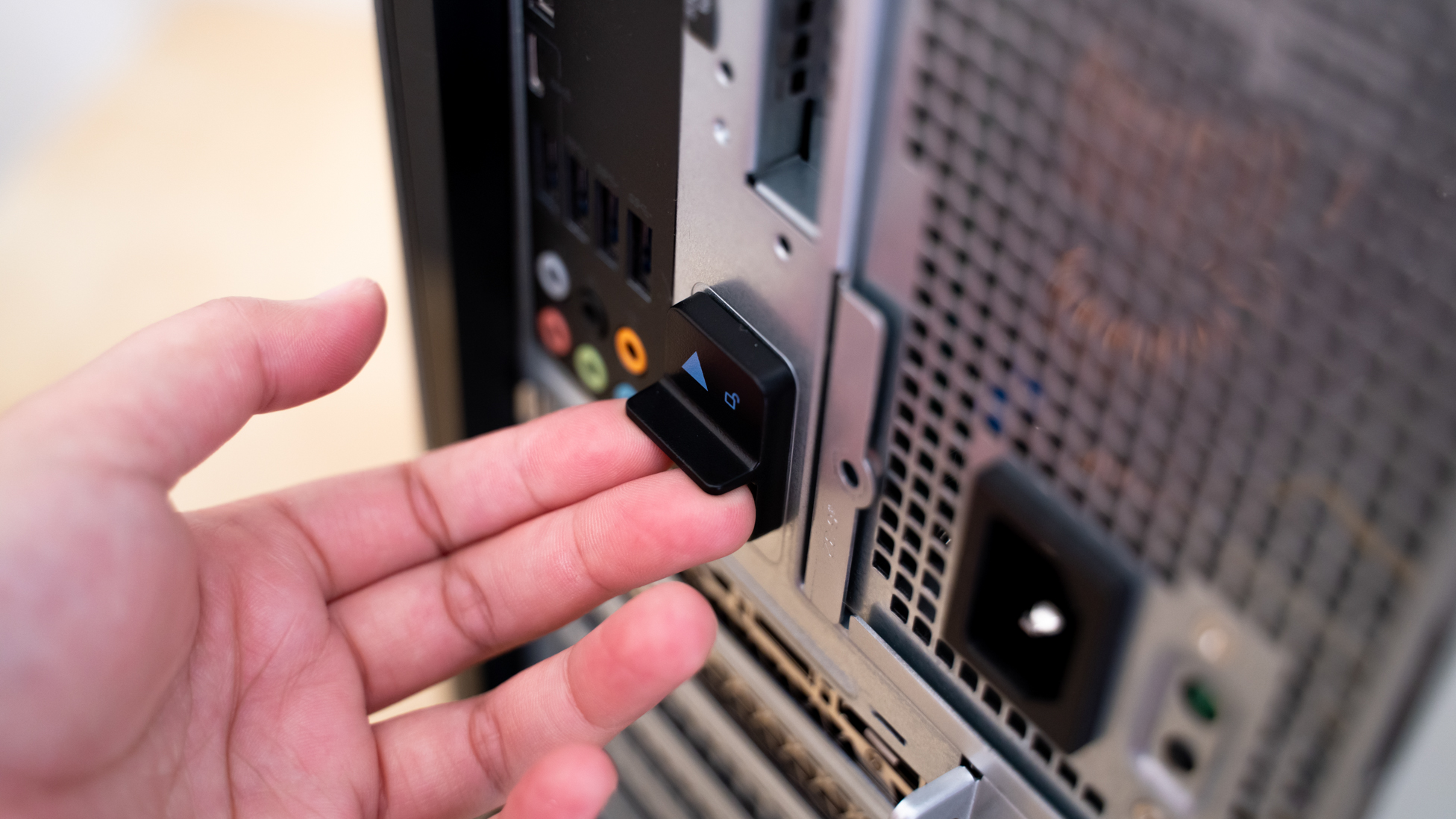
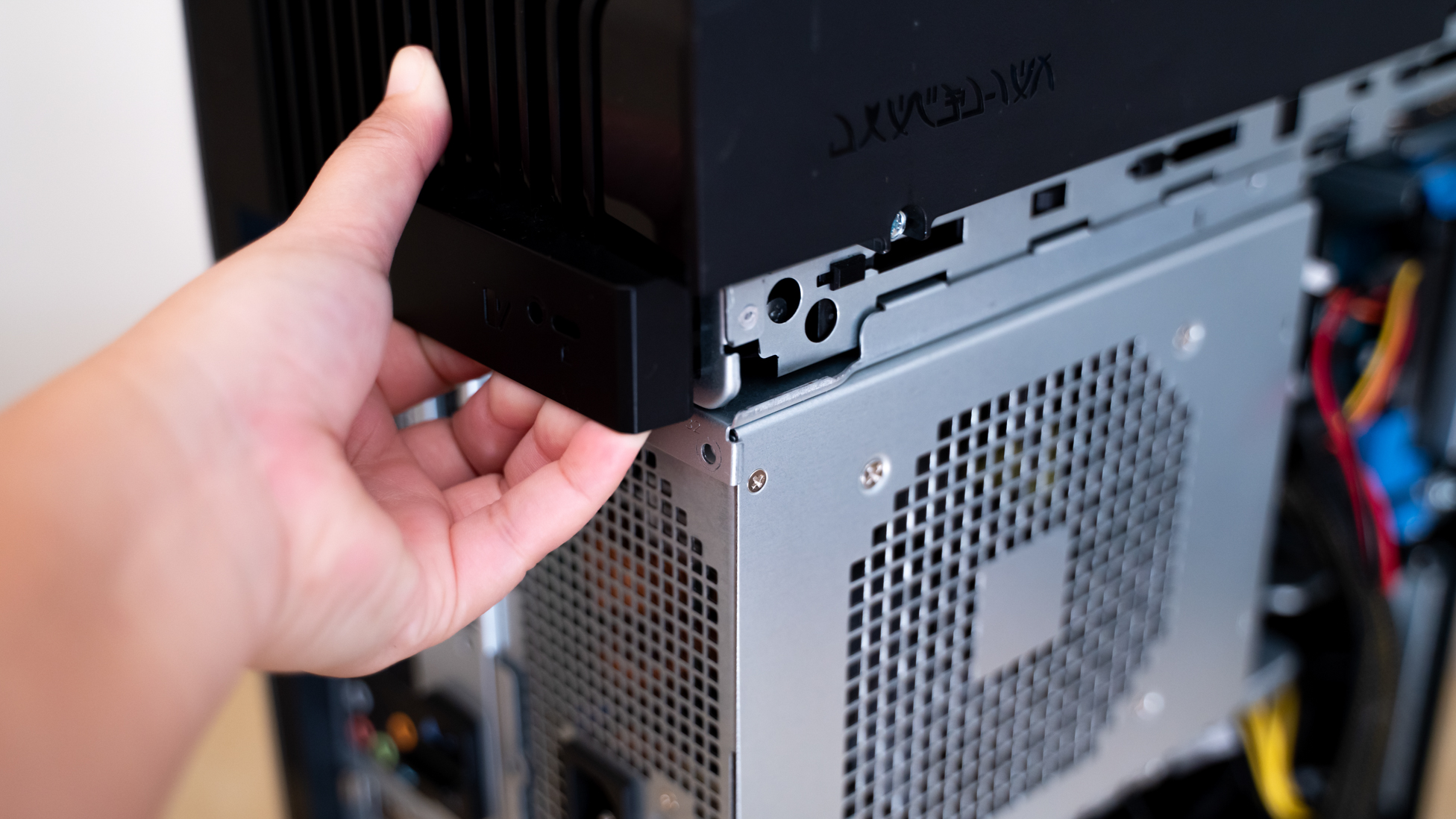
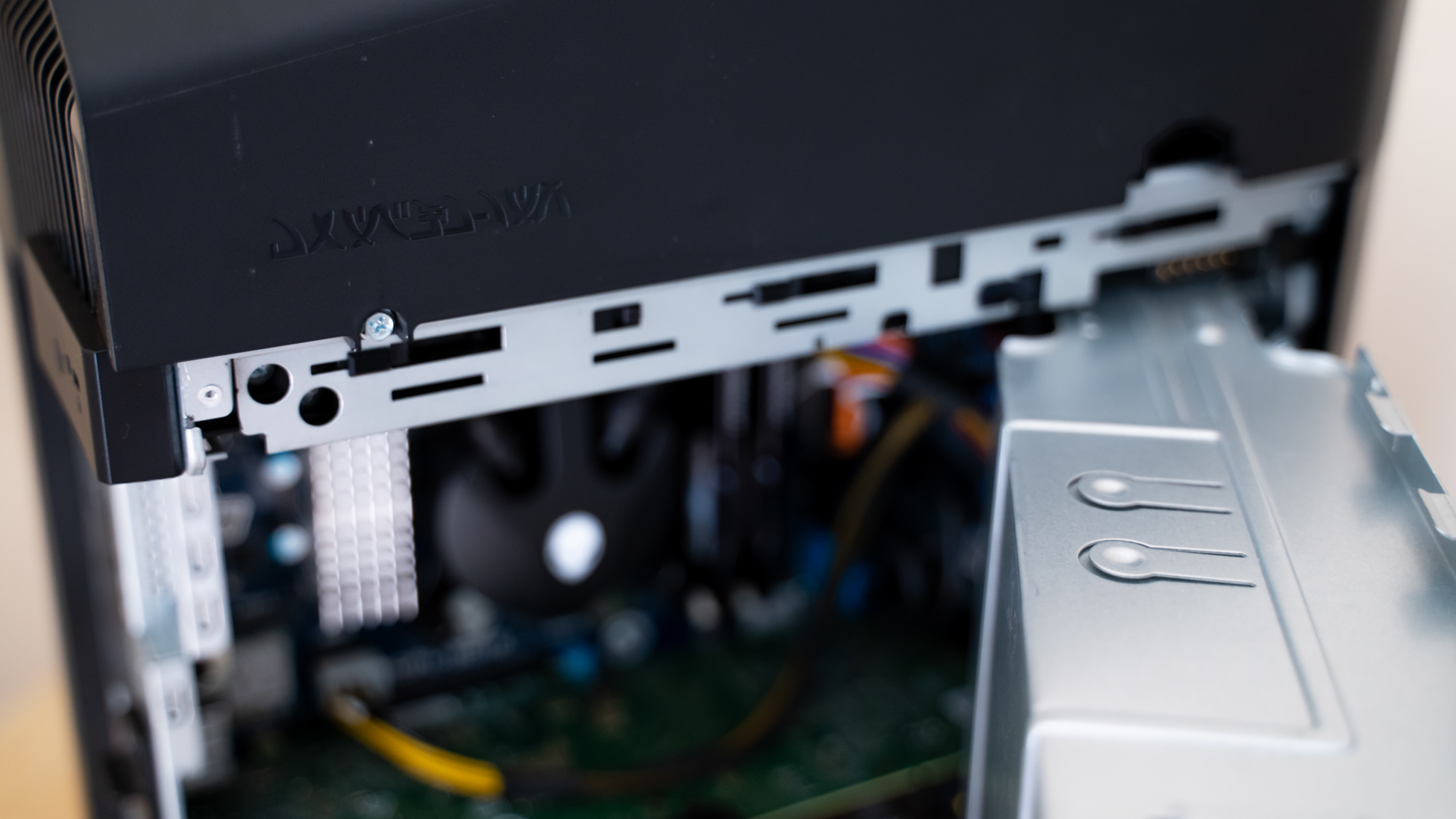
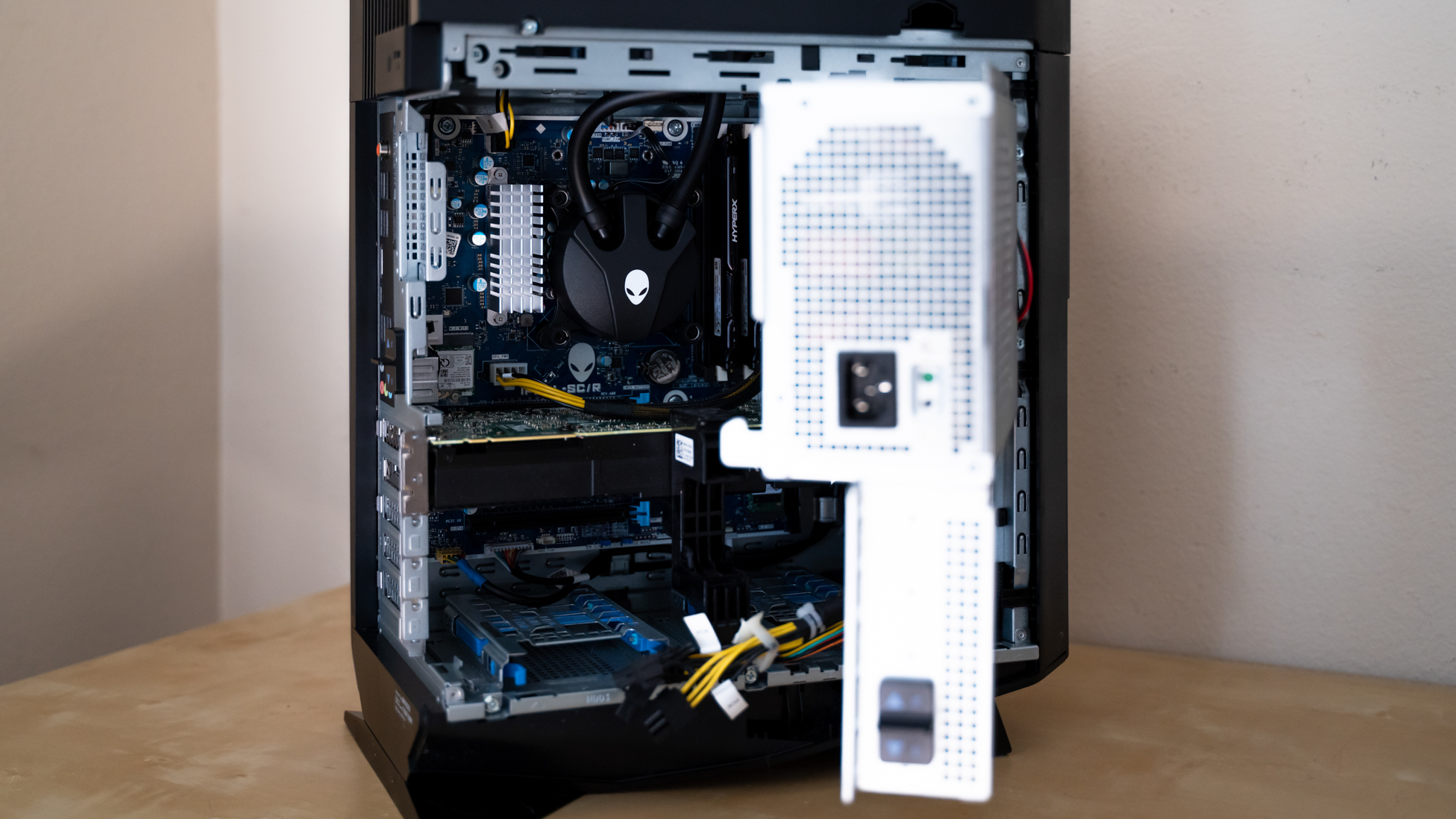
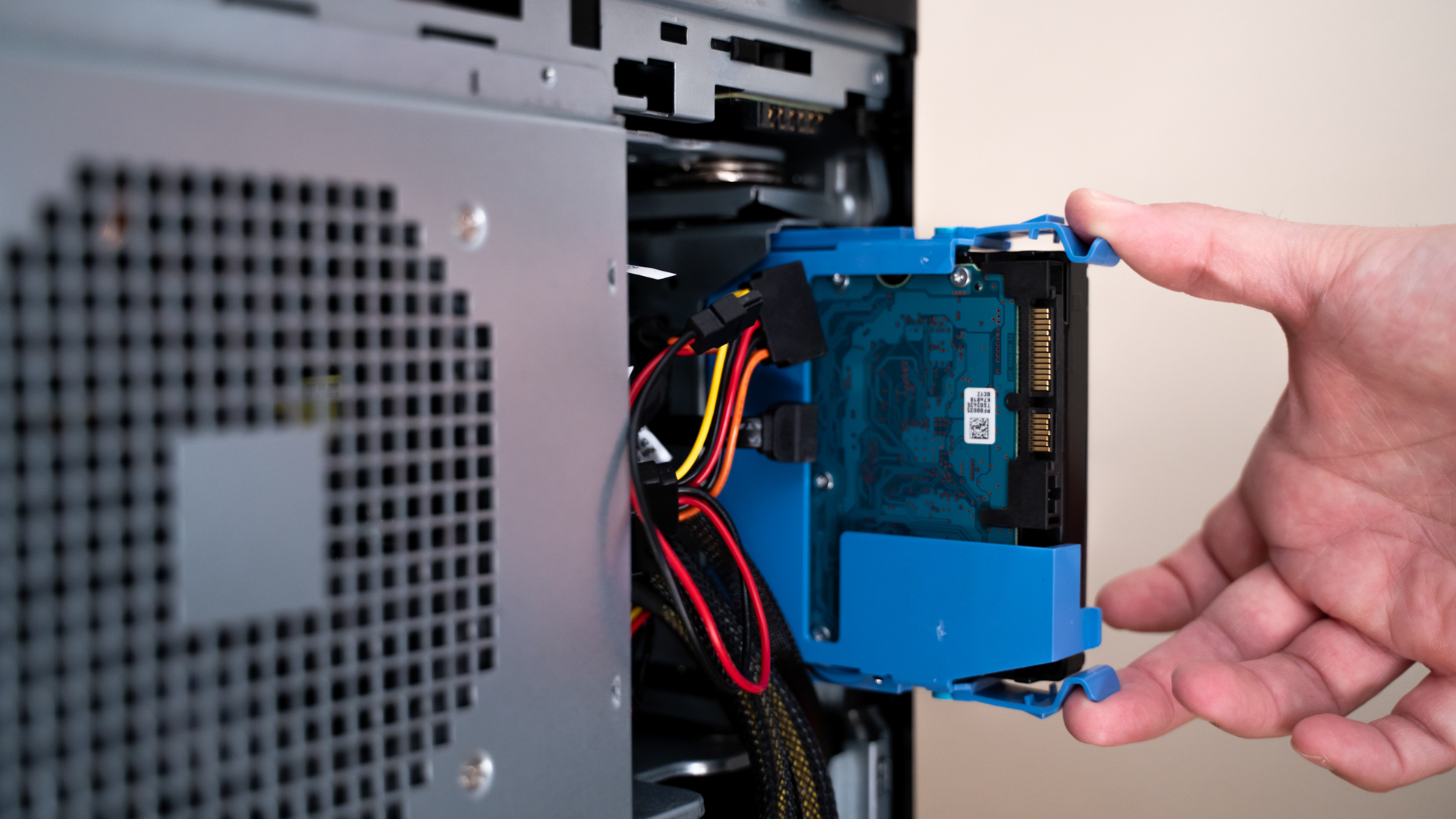
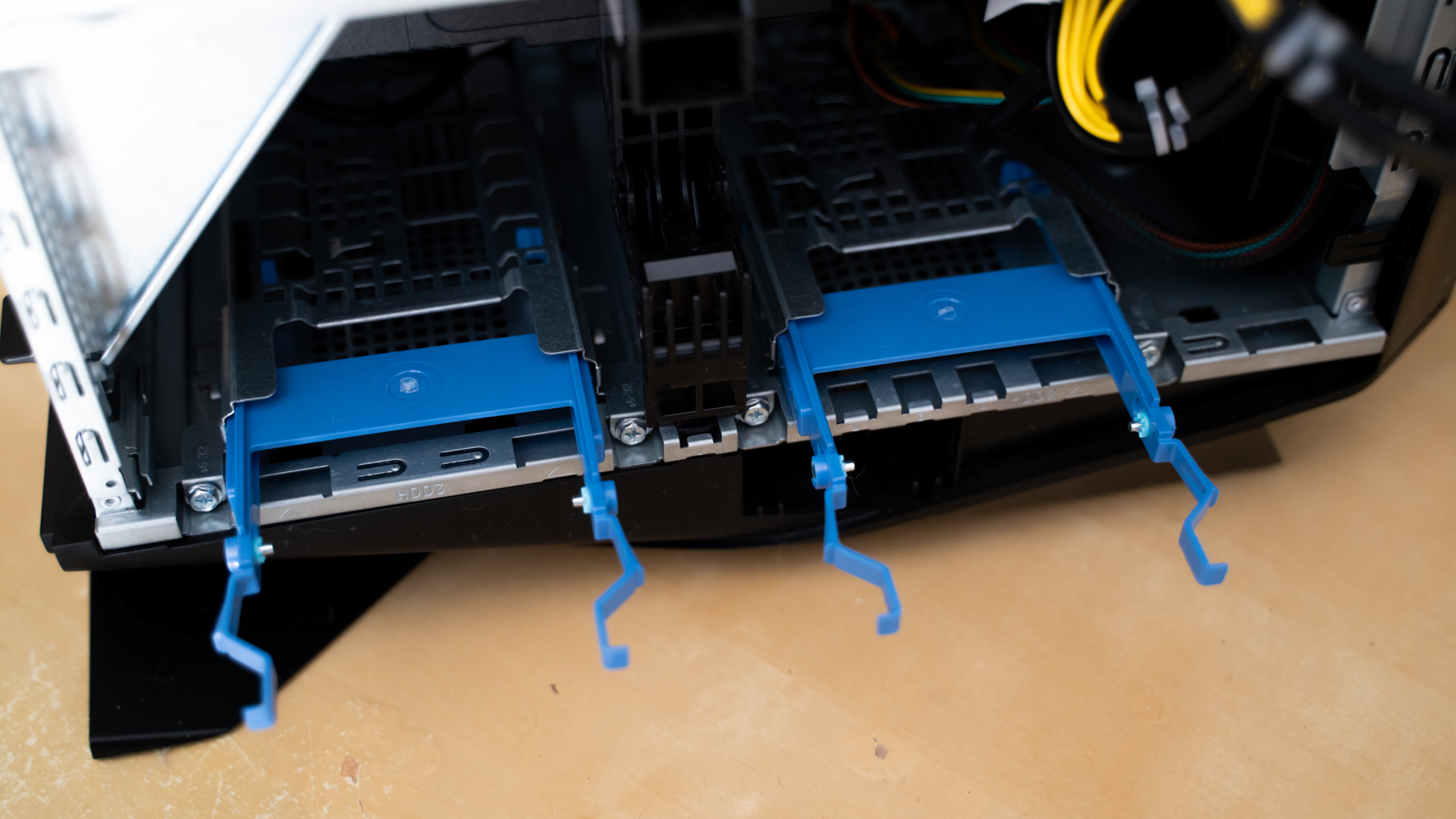
One of the gray side panels can be easily removed to get into the chassis. Though Dell markets the PC as having tool-less access, we did have to remove a screw to get inside. With that said, hard drives, the GPU, RAM and extra slots are all tool-less, making this a very easy computer to get into and upgrade.
The computer is also fairly future proof. Even if you get the base model, you can always upgrade to that Nvidia RTX 2080 Ti later. Or you can upgrade to 64GB of RAM – most computers still come stock with 8GB or 16GB for brawnier gaming computers. Our chassis has two extra slots for extra peripherals, like hard drives, on top of the two that come with the machine.
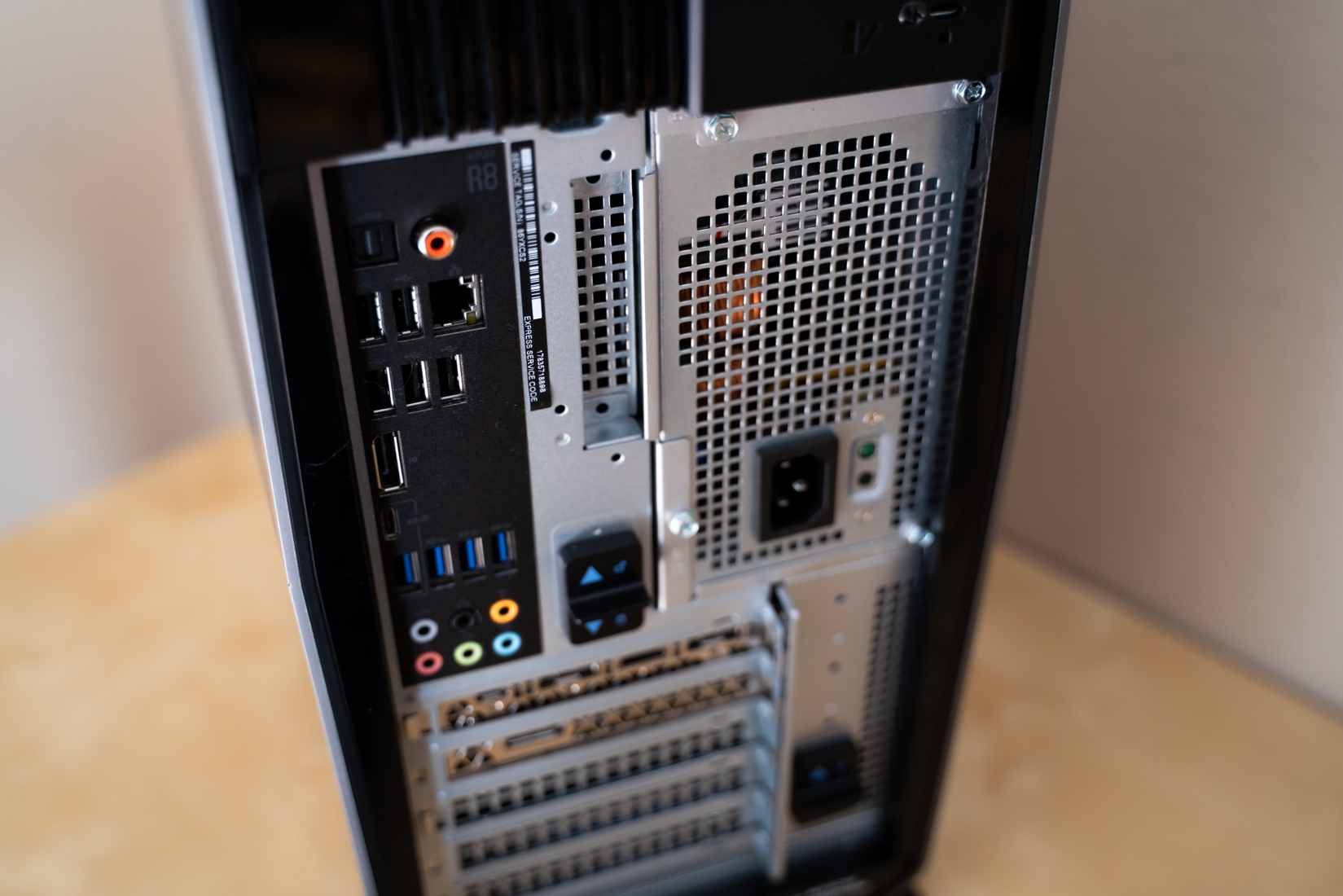
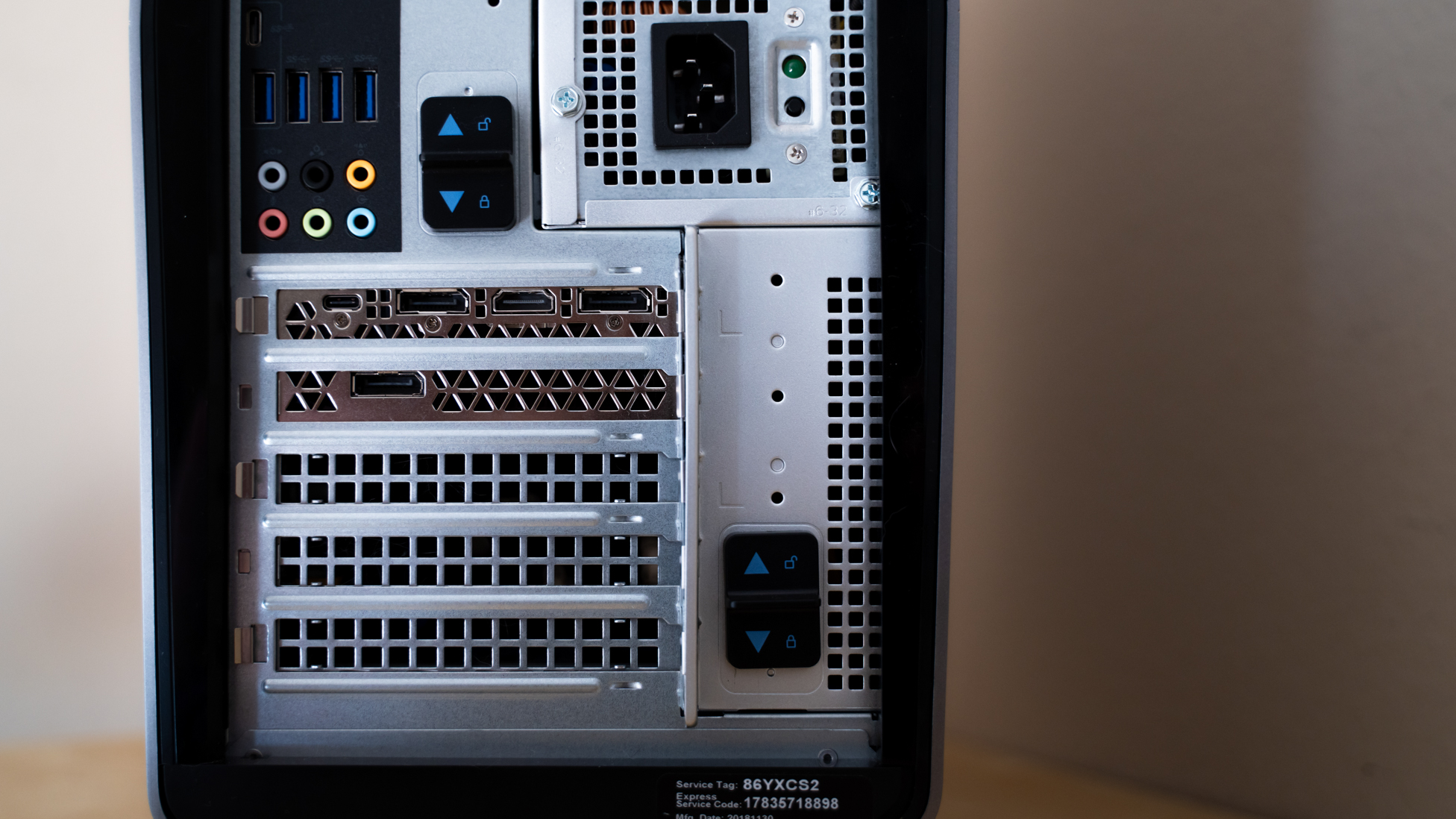
The machine even comes with more ports than any gamer or home user could ask for. It has USB-C ports on both the front and rear, multiple USB-3 and USB-2 ports, as well as three different ways to connect to a monitor or two on the video card (DisplayPort, HDMI and USB-C). It even has enough audio outputs to handle a surround sound system – not something we see every day.
Performance
3DMark: Sky Diver: 47706; Fire Strike: 20867; Time Spy: 9782
Cinebench CPU: 1424 points; Graphics: 131.79 fps
GeekBench: 4939 (single-core); 29505 (multi-core)
PCMark 8 (Home Test): 4681 points
Total War: Warhammer II (1080p, Ultra): 54.55 fps; (1080p; Low): 144.45 fps
Shadow of the Tomb Raider (1080p, Ultra): 117 fps; (1080p, Low): 158.5 fps
The performance of the Alienware Aurora R8 is no joke. While the base model will probably be adequate for running AAA games, you’ll probably need to adjust the settings a little when exploring the jungles of Shadow of the Tomb Raider, the countryside of The Witcher 3 or tackling any graphics hungry game.
With our souped-up model, however, 1080p gaming was a breeze with the only issue being screen tearing, because our monitors couldn’t always keep up – easily fixed with v-sync or plugging into a monitor with a higher refresh rate. The Intel Core i7 and 32GB of RAM are not even the highest selectable options but are more than enough to run most AAA games at around 60 frames per second (fps) or more. Shadow of the Tomb Raider, for example, plays at an impressive 117 fps on Ultra settings on 1080p.
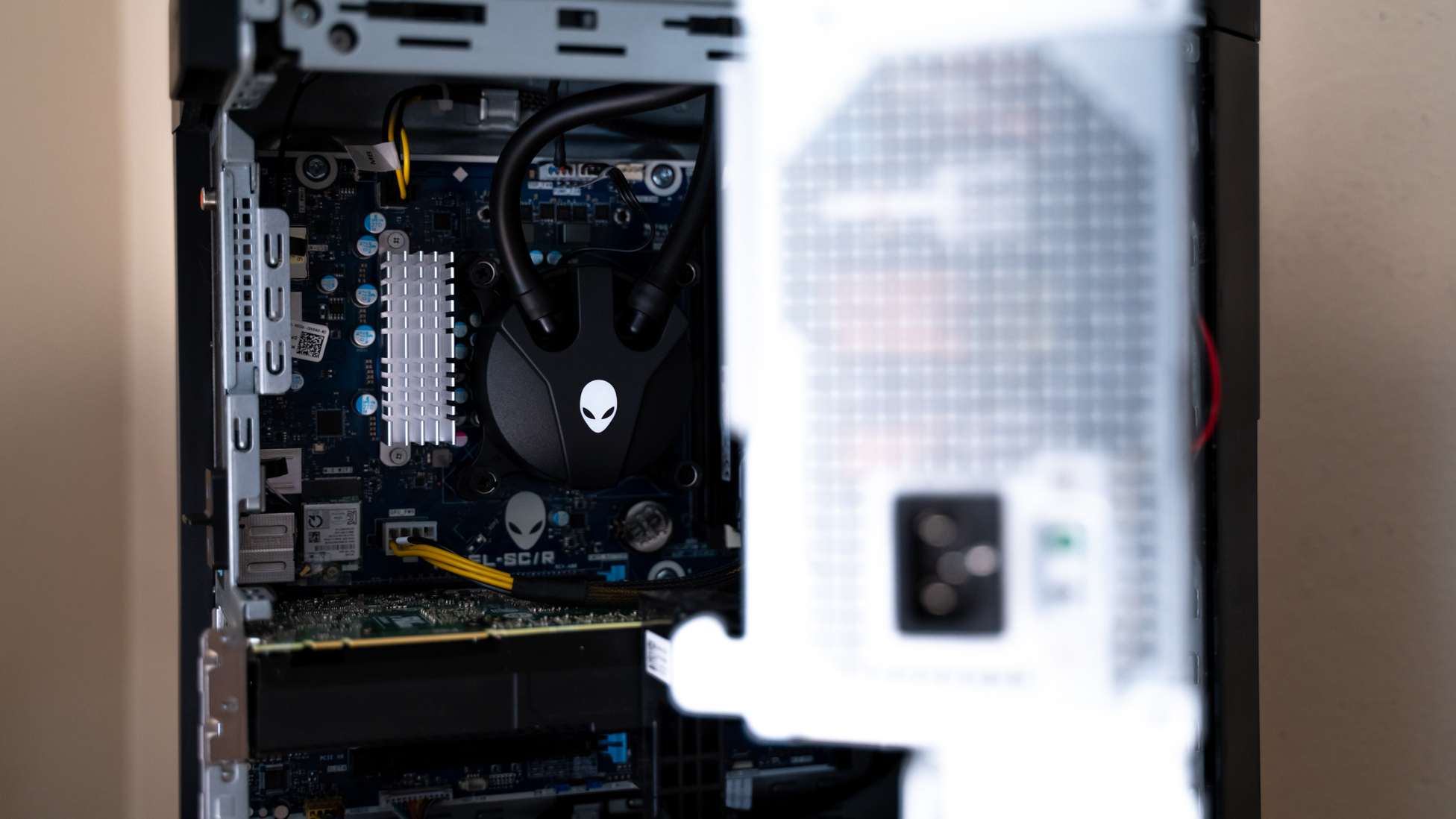
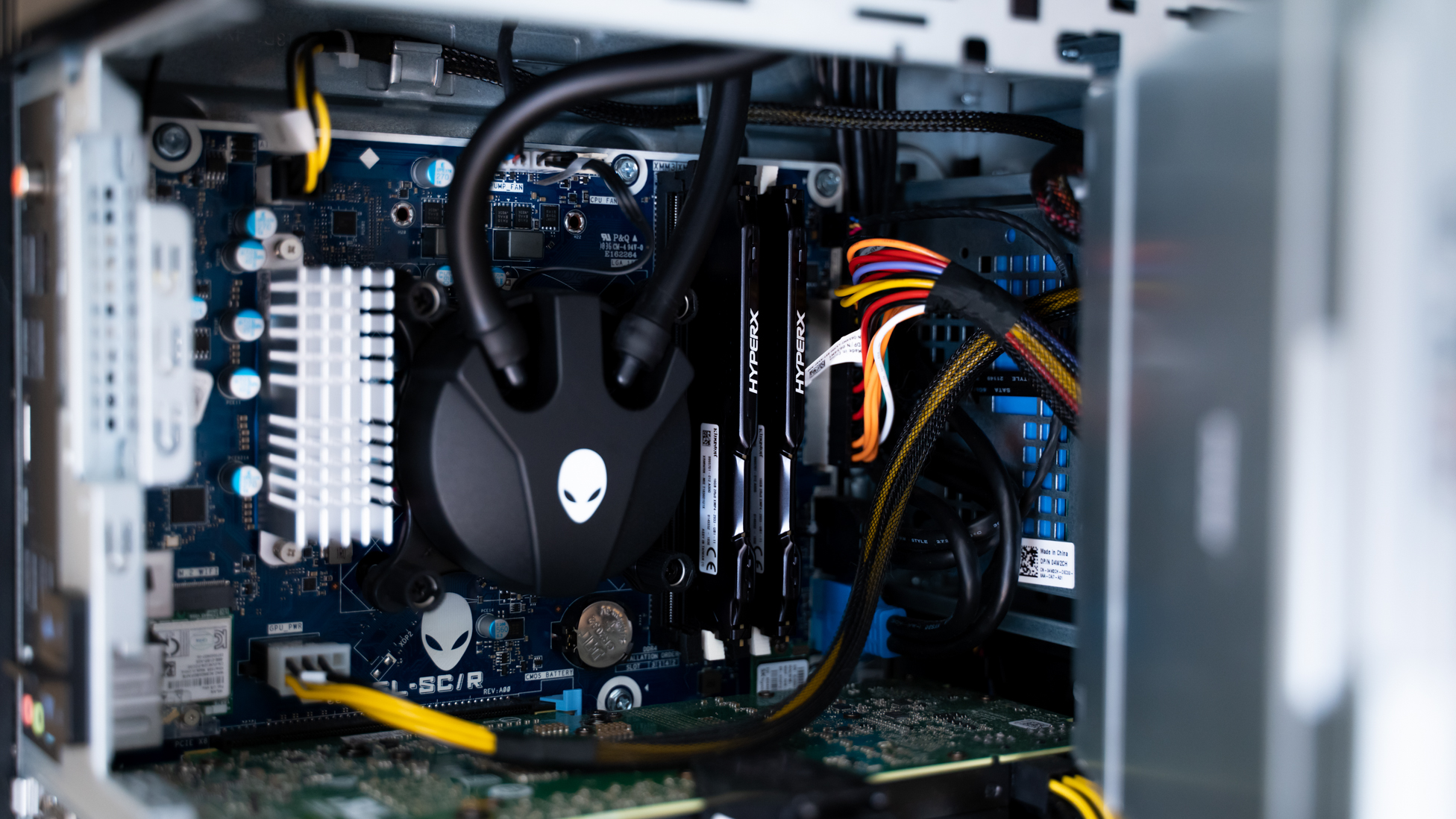
You may see some issues if you’re trying to push the computer to the limit and implement either ray tracing, a very new technology only available on a handful of games, or run at a higher resolution. We saw some frame rate drops when using ray tracing on Shadow of the Tomb Raider. And, while running games at 1440p still brought very respectable results, at 4K, games like Far Cry 5 and Hitman 2 couldn’t muster 60 fps (27 and 40 fps on Ultra, respectively). However, Shadow of the Tomb Raider still came in just under 60 fps on 4k at a respectable 56 fps, though we still experienced some frame drops.
It should be noted that even under duress, the fans don’t get obnoxiously loud and the computer doesn’t generate too much heat, even in a hot apartment. This is a nice surprise, especially considering how close we are to the processor (CPU) and the fact we usually used speakers instead of headphones. If you do change the fan settings to run at full blast, then they do get obnoxious. However, you have to change their settings in the Alienware Command Center to get to that point.
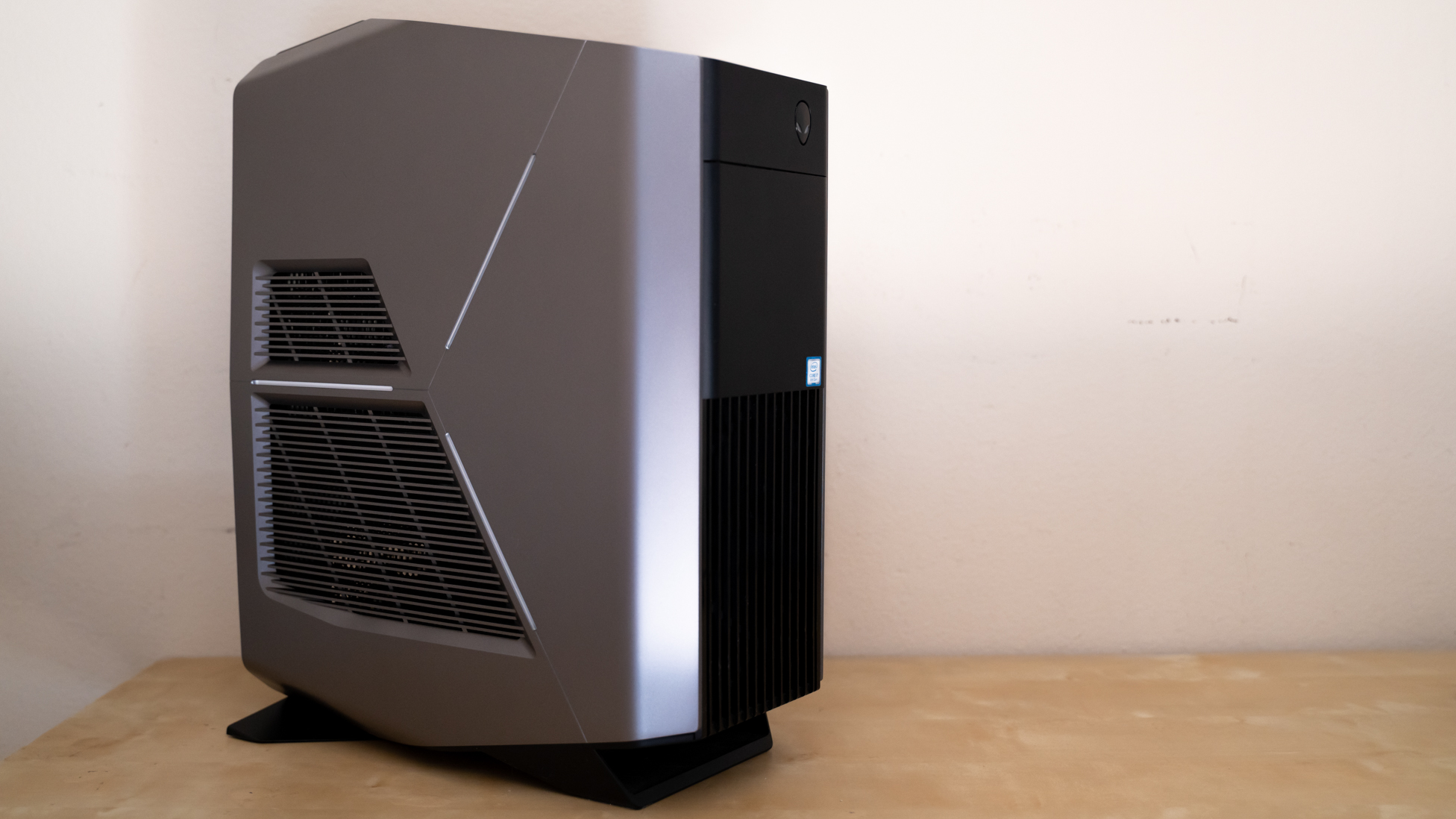
Software
The main piece of software that Alienware offers as a unique feature with its desktops is the Alienware Command Center. And, while you really only have this app for most of your software customization, it is a pretty comprehensive program.
It scans every game you have installed on the computer and makes it accessible through the Command Center, saving you a few clicks through Steam or wherever you’ve downloaded games from. Not only can you launch these games here, you can customize thermals, power, audio recon and RGB lighting profiles per game so that when you run Shadow of the Tomb Raider, the computer can light up completely differently than running Resident Evil 2 or Hitman 2.
In the app, there are four menu tabs at the top, “Home,” “Library,” FX,” and “Fusion” to select from. Each of these tabs will bring you to a different screen to control a different aspect of the computer. The Home tab is a bit of an all-around option that offers you a selection of most played or most recently installed games as well as adjusting the overall power, thermal and overclock profiles of the computer (the overclock settings are not adjustable per game).
The library tab gives a comprehensive look at all your games. While you can adjust settings on the home page, this is where we generally selected the different profile options per game. The Fusion tab is where you can see what each profile does, as well as create your own. So, if you want the thermal profile, which controls two fans in the chassis, to have the fans on at full blast the whole time, you can do that here. Overclock settings can be adjusted here as well with control over the CPU, GPU and RAM. Just make sure you know what you’re doing if you don’t want to use one of the handful preset overclock profiles that Alienware has provided.
Lastly, the FX tab is where the RGB lighting is controlled. The Alienware logo on the front and the three outwardly pointing lines on each side of the case can be individually programmed. There are seven preset options to choose from, each of which can be customized for color and speed. Whether you want to make them all a solid pink, have them breathe blue or cycle through colors, there are plenty of options.
The only other program that should be mentioned here is the Killer Control Center which allows the user to control network settings to boost or prioritize bandwidth for online gaming, downloads and the like.
Final verdict
We really enjoyed putting the Alienware Aurora R8 through its paces. It has more power than we really needed for our gaming needs and is more than capable for just about anything a home user could possibly want out of a gaming computer short of spotless 4K.
In fact, the rig’s only drawbacks may depend on how hard you’re pushing your computer. It’s not quite there for 4K gaming or ray tracing, though that might change for the latter as we should see more games with ray tracing built in instead of retrofitted.
The computer’s pricing is not amazing, but considering what you get and the cost of the individual components, it’s about what you would expect. So while this might not be a steal, the Aurora R8 is definitely a worthy beast of a computer to help immerse you in your next adventure.

Michelle Rae Uy is the former Computing Reviews and Buying Guides Editor at TechRadar. She's a Los Angeles-based tech, travel and lifestyle writer covering a wide range of topics, from computing to the latest in green commutes to the best hiking trails. She's an ambivert who enjoys communing with nature and traveling for months at a time just as much as watching movies and playing sim games at home. That also means that she has a lot more avenues to explore in terms of understanding how tech can improve the different aspects of our lives.
